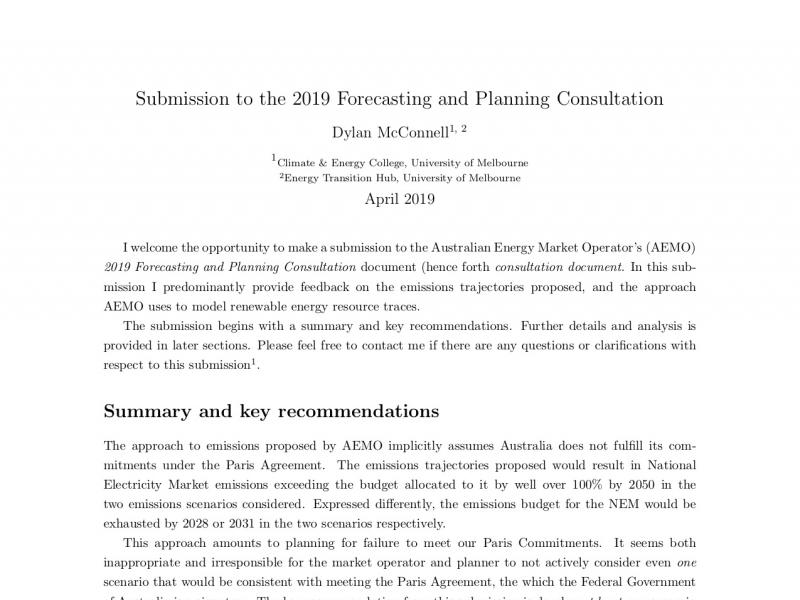
Summary and key recommendations
The approach to emissions proposed by AEMO implicitly assumes Australia does not fulfill its com- mitments under the Paris Agreement. The emissions trajectories proposed would result in National Electricity Market emissions exceeding the budget allocated to it by well over 100% by 2050 in the two emissions scenarios considered. Expressed differently, the emissions budget for the NEM would be exhausted by 2028 or 2031 in the two scenarios respectively.
This approach amounts to planning for failure to meet our Paris Commitments. It seems both inappropriate and irresponsible for the market operator and planner to not actively consider even one scenario that would be consistent with meeting the Paris Agreement, the which the Federal Government of Australia is a signatory. The key recommendation from this submission is develop at least one scenario that would consider our commitments under the Paris Agreement.
The other recommendations relate to improving the development of renewable energy resource traces and improving data availability. The current approach to renewable energy trace development signif- icantly undervalues the potential for some resources (and in particular, Concentrating Solar Thermal, CST).
- Recommendation 1: Develop scenarios that reflect emissions in the NEM being consistent with the Paris Agreement commitment. At an absolute minimum, this should limit emissions from the NEM to the budget derived by Climate Change Authority (CCA) in their electricity sector analysis.
- Recommendation 2: Develop a more sophisticated approach to resource trace development that allow the full capability, value and optimisation of different renewable energy resources to be explored.
- Recommendation 3: Make more of the input assumption data from the different scenarios available.
McConnell D, Submission to the AEMO 2019 Forecasting and Planning Consultation, April 2018


